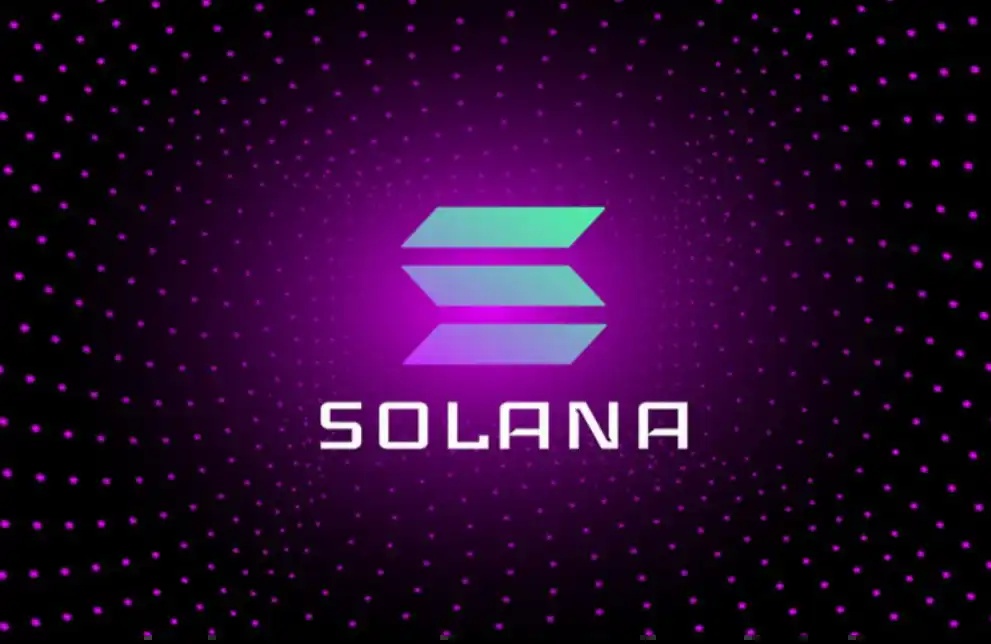Stacks Nakamoto Upgrade - Big Bang Moment
Original source: stacks

While the Bitcoin halving has passed, the Nakamoto upgrade (STX's unique Bitcoin L2 upgrade) is coming. We believe that the market has not fully realized the importance of the STX Nakamoto upgrade, and STX will be repriced. In addition, we expect sBTC (a permissionless and trustless Bitcoin wrapper on STX) to play a key role in acquiring TVL on STX.
We are optimistic about STX based on the following premise:
1. Faster transaction speeds make DApps possible
The upgraded STX main chain can complete each transaction in about 10 seconds, which becomes faster and will unlock DeFi applications
2. STX halving
Eliminates $73 million in annual selling pressure
3. sBTC’s growing TVL (base case: $1b)
Built by Stacks, sBTC’s trustless design (peers have a trust-based design) should release BTC liquidity to Stacks DeFi
4. Best in class
Stacks is the most adopted Bitcoin L2 compared to its peers Smart Contracts
5. Halving Tailwind
Bitcoin halving = 1.5 years of strong BTC price action. STX tends to outperform BTC on the upside
Advantage #1 | Nakamoto Upgrade: Faster + Lower Emission
Nakamoto Upgrade: 100x+ Improvement. This upgrade is a hard fork that decouples Stacks block production from Bitcoin block times, allowing for faster transaction confirmations, and introduces a new mechanism for Stacks miners to independently produce blocks. Block confirmation times are expected to drop from>10 minutes to ~10 seconds, an improvement of over 100x. The upgrade is already underway (launched at Bitcoin block 840,360 or April 22, 2024) and is expected to be fully completed in July 24 (2 months later than the initial forecast of May 24).

(Transaction volume has exceeded 800,000 for 4 consecutive months. We expect this growth to continue beyond the Nakamoto upgrade. Source: Signal21)
The Nakamoto upgrade made DeFi possible. Even before the upgrade, we have seen a rapid increase in activity on Stacks for a new batch of Stacks DeFi protocols (StackingDAO, Bitflow, zest, etc.), especially StackingDao, which has only been staking for half a year and has more than 30,000 real staking users, staking more than 50 million STX, an explosive growth. After the upgrade, block times will be greatly reduced, and we expect UI/UX improvements to further drive network activity. This should lay the foundation for new applications that were impossible before. These mainly include DeFi primitives that rely on liquidation and arbitrage to work.
STX halving. With the upgrade, emission will be reduced from 1,000 STX per Bitcoin block to 500 STX per BTC block. Given that each BTC block takes about 10 minutes, we estimate this will reduce STX emission/selling pressure by 76,000 STX per day, or over $200,000 per day ($73M per year). We believe this is relatively underappreciated as the technical upgrades (sBTC and Nakamoto) are getting more attention.
Benefit #2 | sBTC: $10B TVL Opportunity
sBTC: The First Trustless Solution for Wrapped BTC. sBTC is the first trustless solution to bridge BTC from the Bitcoin main layer to another chain. sBTC is currently being developed by the Stacks core team in conjunction with the Nakamoto upgrade and will be launched in August 24 (i.e. 1 month after the upgrade is completed).

(Shows how Peg-Ins and Peg-Outs (bridging in and out of the stack) will work in a post-sBTC world. Source: sBTC whitepaper)
The most decentralized BTC wrapper. sBTC relies solely on a decentralized network of validators (completely permissionless to join). It is designed with a set of economic rules that incentivizes validators to hold the peg to avoid collateral slashing. This is in stark contrast to existing solutions like Ethereum’s wBTC, R-BTC on Rootstock, and L-BTC on Liquid, which are operated by centralized custodians or a group of trusted entities (multisig) and embed trust assumptions.
Trustlessness is important. We’ve spoken with Bitcoin whales and understand that they want to earn yield on Bitcoin, but often find it difficult to trust custodial Bitcoin wrappers. Common resistance to using wBTC include: 1. Centralized minting and burning entities; 2. Custody risk; 3. KYC requirements. We believe this is why only 55-60% of Bitcoin supply has been active over the past 3 years. This is low considering BTC has fluctuated between $15-75k during this time, but this is changing.

sBTC will erode wBTC’s share. We believe that sBTC, which is permissionless and open to participation, has the potential to unlock liquidity in Bitcoin (especially whales) for use in DeFi. wBTC currently has an MCap of ~$10b, and we believe sBTC has the potential to reach these levels as well due to its more decentralized nature.

(wBTC market cap - Source: Coingecko)
Advantage #3 | STX is a top-notch BTC L2 play
Solve competition. We have seen several Bitcoin L2s emerge recently and thought it was prudent to address Stacks’ differentiation.
Stacks is ahead of the curve compared to older L2s. Older L2s such as Lightning Network, Stacks, Rootstock, and Liquid have been around since 2017. Stacks is ahead of other older Bitcoin L2s for a variety of reasons:
Compared to Lightning Network and Liquid: Stacks has smart contracts. Both Lightning Network and Liquid Network do not support smart contract execution and are primarily used to facilitate Bitcoin transfers. As such, we do not consider the two networks to be competitors.
Compared to Rootstock: More Adoption, More Decentralized. Rootstock is most similar to Stacks in that it supports smart contract execution via the Rootstock Virtual Machine (RVM), allowing users to migrate Ethereum contracts onto the Bitcoin network. That said, Stacks beats Rootstock on almost every relevant user metric and is more decentralized. Rootstock’s BTC bridge solution, RBTC via Powpeg, relies on custodians to maintain an equal 1:1 peg. While Stacks implements a similar architecture at the time of writing, with the sBTC upgrade, Stacks will move to a permissionless bridge system, which will be another incremental advantage over competitors like Rootstock.

New entrants have smart contracts, but they are not Lindy yet. Recently, we have seen the emergence of several Bitcoin L2s, including Botanix, Merlin, Build-on-Bitcoin (BOB), and Chainway. While these solutions expand the use cases of BTC by introducing EVM-compatible execution layers, we believe Stacks is still ahead because:
Higher degree of trustlessness:When sBTC launches, Stacks will still be the only L2 with a permissionless bridge (and one that Bitcoin whales will trust), thus unlocking the most BTC liquidity
Competitor fragmentation:As a new batch of solutions implement EVM-based solutions, these chains will compete for liquidity among various other EVM chains. We expect Stacks to gain a stickier user base of Bitcoin liquidity.
Competitors Delayed Launches:Most solutions (e.g. Botanix) have delayed their mainnet launch dates multiple times and are currently expected in Q3. BOB has set a mainnet date for late Q2. Until we see competing solutions launch mainnet, we believe most other solutions have non-differentiated products in a competitive EVM market.
Advantage #4 | Bitcoin Halving: Stacking for Beta Gains
Bitcoin’s 4th Halving. Empirically, Bitcoin halvings are bullish events, with BTC rallying strongly for 1-1.5 years over the past 3 halvings. On 19 April 24, Bitcoin had its 4th halving, which reduced the block reward from 6.25 BTC to 3.125 BTC, theoretically reducing emission/selling pressure by ~$30M per day at current prices.

We believe Stacks is a high beta to Bitcoin. As Bitcoin rises, Stacks tends to outperform. If Bitcoin's post-halving price action holds, we expect Stacks to outperform. Additionally, the network is on the cusp of the largest network upgrade ever, providing a technological/fundamental convergence.

(Stx and btc trend comparison)
Valuation | Base Case: 5x-15x Growth
For the reasons above (Nakamoto + sBTC + best-in-class BTC L2 + BTC post-halving beta), we believe STX will become a highly used Bitcoin L2. Conservatively, STX will increase 5x from current price to $16 billion FDV. This means a reasonable assumption:
Stacks’ SBTC TVL could reach 10% of wBTC’s TVL ($10b), bringing its TVL to ~$1b
Arbitrum, Optimism, Solana, Aptos, and Avalanche trade at an average of ~16x FDV/TVL, applying the same ratio to STX’s projected TVL implies $16b FDV
A more optimistic scenario would be as follows:
Stacks’ SBTC TVL could reach 50% of wBTC’s TVL ($10b), bringing its TVL to ~$5b.
If a 10x FDV/TVL multiple is used, it could mean Stx’s FDV is over $50 billion, 15x the current value.
Conclusion
A turning point for Bitcoin DeFi. The Satoshi upgrade marks a key turning point for Stacks, reducing block confirmation times and halving STX emissions, which directly addresses scalability and inflation issues. The introduction of sBTC will transform Bitcoin’s role in DeFi, providing a decentralized, trustless bridge that can shift liquidity preferences away from centralized Bitcoin wrappers like wBTC. Given these enhancements and the context of Bitcoin’s recent halving (which historically precedes significant market appreciation), Stacks is strategically positioned to gain greater market share and user adoption.
We are very optimistic about BTC Layer2. We have seen that the daily transaction volume of DEX based on Solana chain has begun to surpass the daily transaction volume of DEX based on Ethereum chain. We believe that in the near future, the daily transaction volume of DEX based on Stacks will surpass the former two. From now to the end of 2025, it will be a stage for BTC Layer2 to shine. By releasing the liquidity of BTC, more new and attractive models will be generated, which will lead to a new round of bull market. The era of BTC Layer2 has just begun.
Original link
Welcome to join the official BlockBeats community:
Telegram Subscription Group: https://t.me/theblockbeats
Telegram Discussion Group: https://t.me/BlockBeats_App
Official Twitter Account: https://twitter.com/BlockBeatsAsia


 Forum
Forum Finance
Finance
 Specials
Specials
 On-chain Eco
On-chain Eco
 Entry
Entry
 Podcasts
Podcasts
 Activities
Activities









 0
0